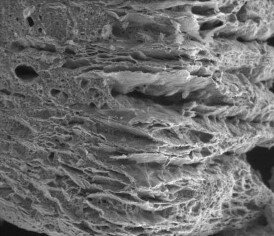
With the rise of renewable energy technology, a primary concern has become the long-term storage of energy. Because renewable sources of energy such as wind and solar are inconsistent, storing the energy for later use is a necessary technology to make renewables viable moving into the future. However, these energy storage technologies can be used in other applications as well. This project focused on the application of a technology called Thermochemical Energy Storage (TCES) at a Portland General Electric power plant in Boardman, Oregon. Using TCES, heat energy can be stored as chemical energy and later released again as heat energy. In the case of this project, heat energy from a hot water stream powers a dehydration reaction in a salt hydrate, meaning that the salt hydrate expels its water molecules and becomes dehydrated, effectively “charged.” Later, water can be re-introduced to the dehydrated salt and trigger the reverse reaction, re-hydrating the salt and releasing heat energy – this heat energy can be used for heating buildings, for example. TCES is a relatively experimental technology, and has not yet seen commercial implementation, but there is much research being done. Out of the many salt hydrates to choose from, our team selected potassium carbonate, K2CO3, because it is inexpensive, corrosion-free, and chemically stable over long periods of time and over many cycles. However, K2CO3 has its problems in a TCES application. It exhibits slow hydration reaction kinetics, it is prone to notable swelling and shrinking, and easily experiences particle agglomeration (where particles stick and clump together). Particle agglomeration is an obstacle to effective heat transfer, reaction kinetics, and practical material transport in and out of a reactor. To address these issues, we combined K2CO3 with a host matrix, exfoliated vermiculite, which is a porous media that can absorb and “host” the salt compound. In combination with vermiculite, the problems of swelling, shrinking, and particle agglomeration are almost completely resolved. To facilitate the heat transfer process, we designed a reactor in the form of a shell-and-tube heat exchanger. The hot water stream flows through the tube side of the heat exchanger, providing ample surface area for effective heat transfer, and the salt “bed” is located in the tube side, undergoing a dehydration reaction as it is heated. This is accomplished in a quasi-batch process; once the salt in the reactor has been fully “charged,” the salt can be drained, new salt can be refilled, and the process can begin again. Because TCES is still a new field of research, accurate models for heat transfer and reaction kinetics can be hard to find, so estimating the effectiveness of a process like this can be a bit simplified. In our video below, we show the overview of the project, as well as touch on some of the possible cost savings of heating buildings using TCES instead of electricity. If you have any questions or would like to talk with the team about the project, feel free to join us in the Zoom chat room!

